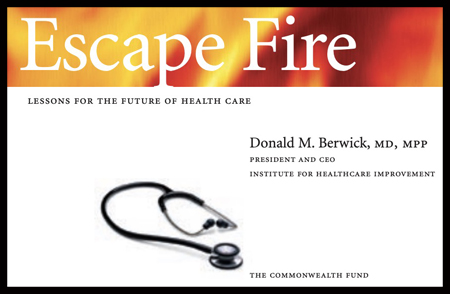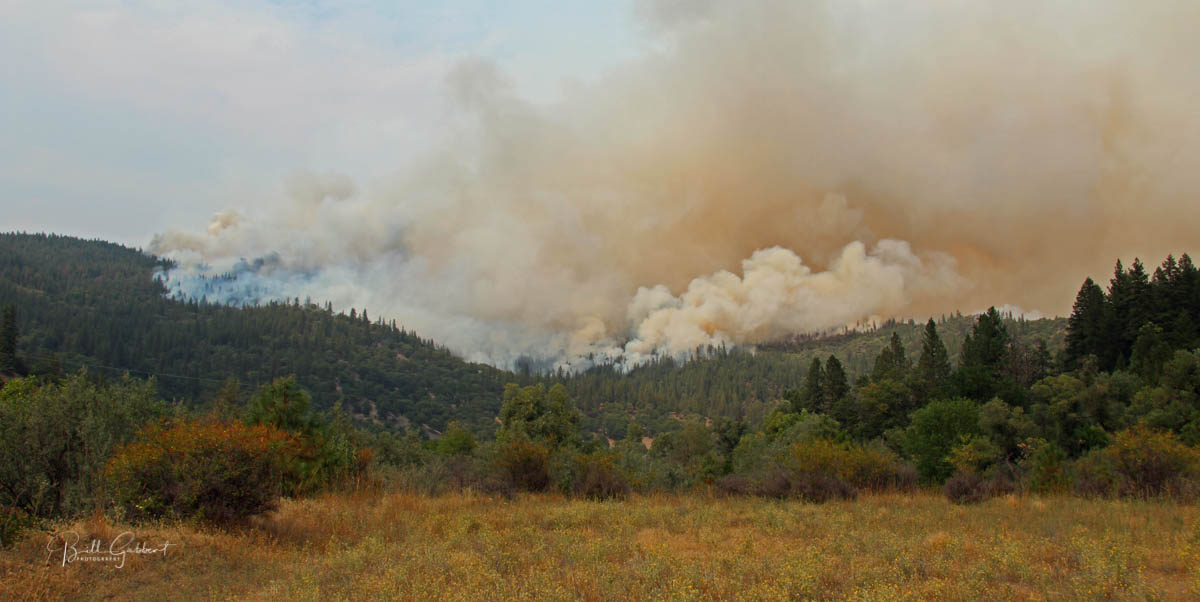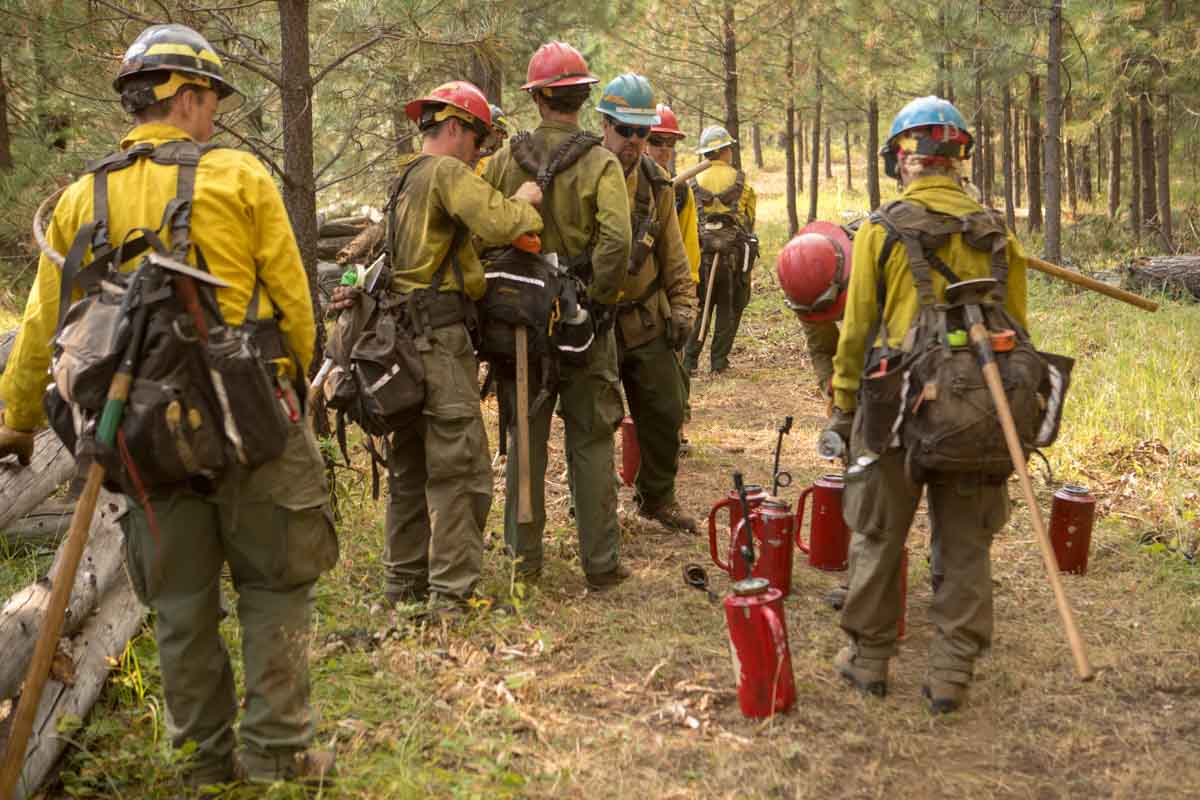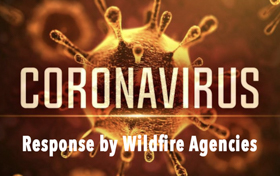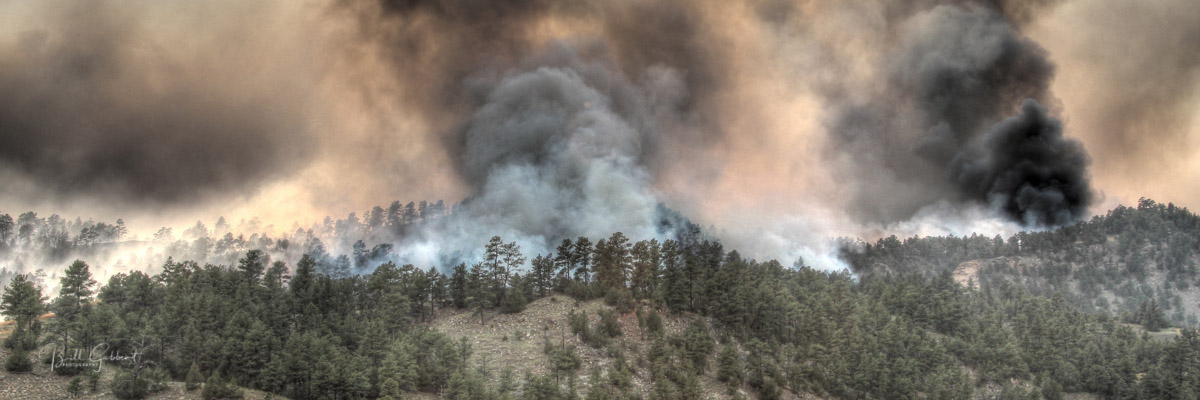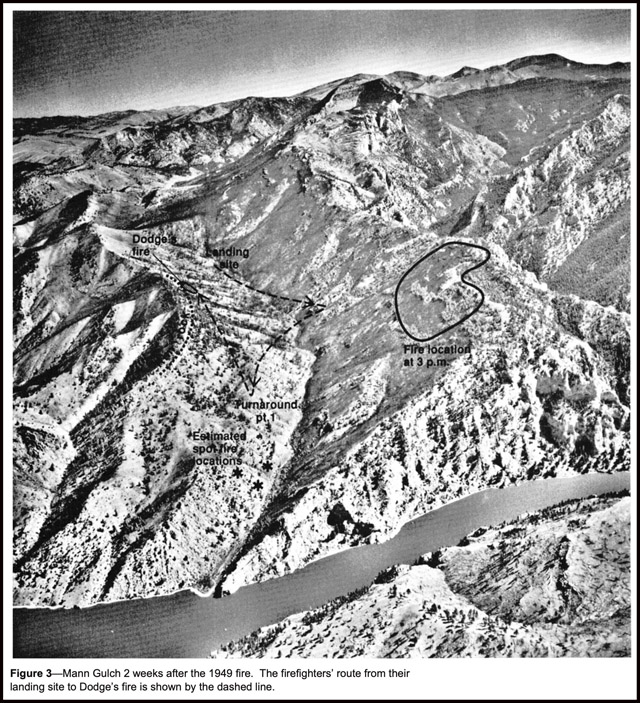
“Remember the story about Mann Gulch? We are at the equivalent of about 5:44,” said Dr. Carter Mecher, Senior Medical Advisor for the Department of Veteran Affairs. He was referring to the time when 16 firefighters faced a fire burning uphill below them, forcing the crew to attempt an escape up a steep slope.
In email messages about the COVID-19 pandemic published April 11 by the New York Times, the Mann Gulch Fire was mentioned three times. It was apparent that many if not most of the dozens of medical experts participating in the message threads were familiar with the references.
Here are excerpts from the messages published by the Times, all written by Dr. Mecher:
- February 20: …Remember the story about Mann Gulch? We are at the equivalent of about 5:44. I anticipate that when we reach 5:45, there is going to be chaos and panic to get anything in place. I doubt that what we would then hurriedly put in place will be any better than what they did on that cruise ship . As a consequence, would expect much the same results.
- February 27: …That would suggest we already have a significant outbreak and are well behind the curve. We are now well past the equivalent 5:45 moment at Mann Gulch. You can’t outrun it.
- March 12: …There is no value to these travel restrictions. A waste of time and energy. The lesson from Mann Gulch was to drop those things that are not essential. That lesson was not heeded. I wouldn’t waste a moment of time on travel restrictions or travel screening. We have nearly as much disease here in the US as the countries in Europe.
For the last 70 years wildland firefighters have studied the fire that killed 13 men who were fighting a wildfire north of Helena, Montana. Lessons can be learned about leadership, communication, fire behavior, firefighting tactics, and improvisation during an emergency.
(More details about the fire are farther down)
I was not aware that the Mann Gulch story had spread like a virus into a much broader audience.
In an interview, Dr. Mecher said he first heard in 1999 about what the medical community could learn from the Mann Gulch fire from a lecture by Don Berwick, former head of the Medicare program and cofounder of the Institute for Healthcare Improvement. Mr. Berwick has spoken about it many times and is the author of “Escape Fire: Lessons for the Future of Health Care”, where several of the 56 pages explore what happened on that steep slope above the Missouri River in 1949.
Dr. Mecher said the use of an escape fire during the Mann Gulch Fire, which was the first documented use of the tactic,”… pointed to innovation in an emergency on the fly. It also spoke to us of a very fast-moving event and what the consequences were in terms of what happened to many of the firefighters. Years ago when we were working on developing a pandemic plan, or a plan for responding to a disease outbreak, it was one of the stories that we told each other to put ourselves in the setting of a fast-moving event.

“I found it a riveting story,” Dr. Mecher continued, “and when we told it to other people I think they found it the same way. It’s a very powerful story. It kind of gets people into the game, to understand this is what it could feel like and that’s why we referenced back to it several times.
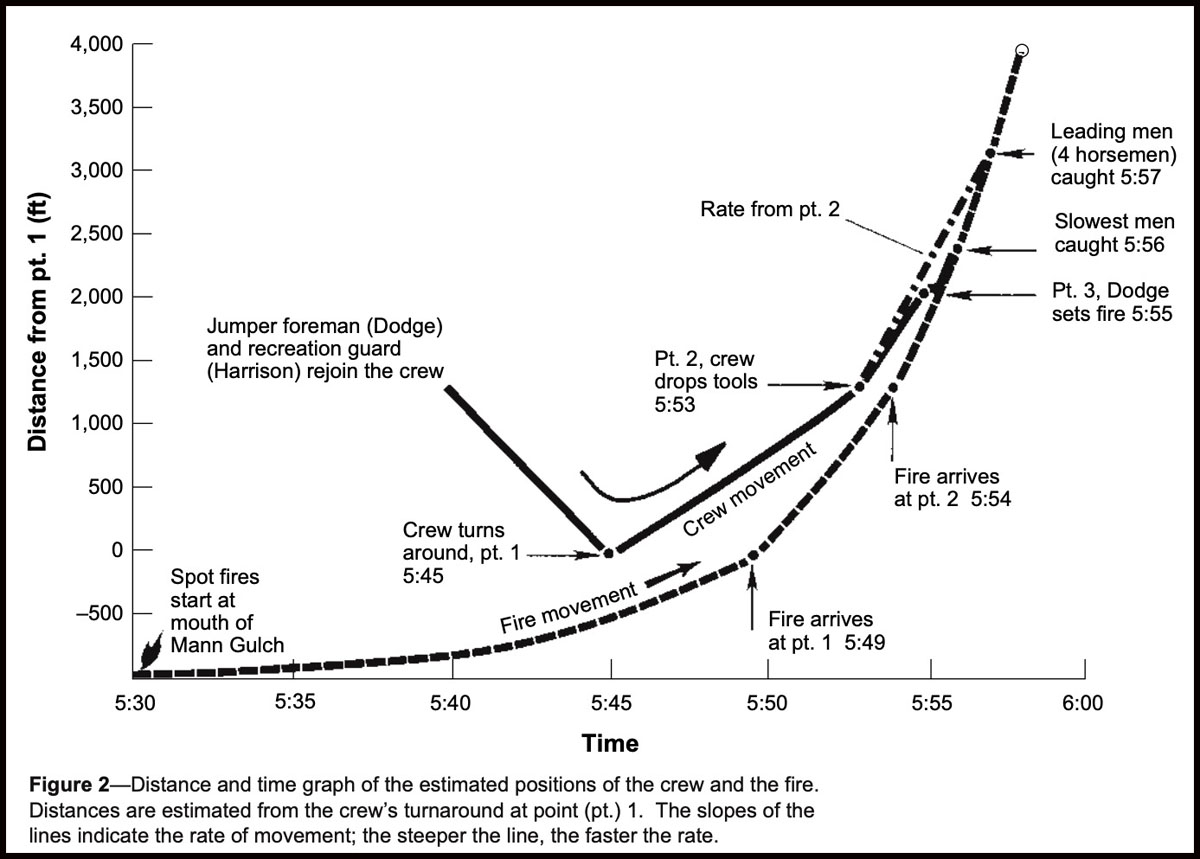
Dr. Mecher referred to the chart from Richard C. Rothermel’s 1993 publication, “Mann Gulch Fire: A Race that Couldn’t be Won”, and said, “That curve looks like an epidemic curve. Fire spreads exponentially and an epidemic spreads exponentially.”
At Mann Gulch after the men had been running for 8 minutes up the hill ahead of the flames, the crew boss, Wag Dodge, told them to drop their tools and keep moving, something that had not been covered in their training.
“The lesson was,” Mr. Mecher said, “if you’re in one of those events sometimes you have to be smart enough to know that you have to drop some things. You can’t outrun it. It moves too quickly. That was a lesson for us, thinking about fast-moving events like epidemics. By the time you realize what you’re in, it’s like a fire. It moves so quickly that it can overcome you.
“One of the things we drew from that story was, ‘What is the equivalent of an escape fire’ “.
After I interviewed Dr. Mecher, I received an email from him that summed up his thoughts about the lessons his medical community learned from the Mann Gulch Fire:
- You cannot wait for the smoke to clear. Once you see things clearly it is already too late. You will need to be comfortable living with uncertainty and incomplete information and make the best decisions you can.
- You can’t outrun a wildfire or an epidemic. By the time you turn to run, it is already upon you.
- In an emergency, you need to figure out what is important and what is not. And that means you might need to drop things you thought, or were taught were essential, and hold on to those things that are the most important. You just need the wisdom to discern the difference between what is important and what isn’t — and the strength to drop things that aren’t important.
- And when in the middle of a fast moving crisis, continue to ask yourself, “What is the equivalent of an escape fire?”
A word from John N. Maclean on the topic
A book about the fire, “Young Men and Fire,” was written by Norman Maclean. He passed away before the book was finalized, and his son John N. Maclean, continued the project, editing it before it went to the printer.
I asked John by email about the references in the emails to Mann Gulch:
“It’s tempting to criticize Dr. Mecher for using the Mann Gulch Fire to push a fatalistic notion, that once you’ve crossed a crucial point you should drop your tools and run like hell,” John wrote. “He does in fact say: ‘There is no value to these travel restrictions. A waste of time and energy. The lesson from Mann Gulch was to drop those things that are not essential. That lesson was not heeded. I wouldn’t waste a moment of time on travel restrictions or travel screening.’
“Mecher was wrong about travel restrictions, which have proved to be valuable tools in the fight against the coronavirus pandemic. But he was right and early and brave about the general situation, calling for strong actions weeks and months before they were undertaken. In the full context of his reported remarks, it appears he used the Mann Gulch Fire mostly to sound an alarm that immediate action was necessary to avoid a calamitous outcome: right on.
“It’s heartening to see lessons from the fire world make their way into thinking about other disasters. Dropping tools, though, is probably not the best lesson here. The two Standard Firefighting Orders most closely linked to the Mann Gulch Fire offer much in the way of relevant wisdom: Know what your fire is doing at all times. Give clear instructions and ensure they are understood.
After 70 years, do we sometimes take lessons from Mann Gulch for granted?
Most wildland firefighters who have been around for more than a couple of years, and especially those who have read “Young Men and Fire”, are very familiar with the Mann Gulch Fire, but I wonder if we sometimes take it for granted, not seeing the forest for the trees. Not only do many in the emerging disease community know about the lessons that can be learned, but others do as well.
Mr. Berwick’s “Escape Fire” has a photo of a group of people sitting on the steep slope in Montana’s Mann Gulch. Below it is the caption, “Learning from disaster. A group of students from The Wharton School at the University of Pennsylvania learn vital lessons in teamwork, communication, and improvisation from the Mann Gulch tragedy.”
Some firefighters have also cross-trained, taking Staff Rides to learn how military leaders, for example, made decisions in stressful rapidly-evolving situations.

Other mentions of “fire” in the emails
“Fire”, unrelated to the Mann Gulch, was mentioned at least four other times in the emails published by the NY Times:
- “Any big or urban cities are going to face the challenges in containment, and the homeless population needs to be taken care of. If there is any infection there, it will spread like fire.”
- “By the time you have substantial community transmission it is too late. It’s like ignoring the smoke detector and waiting until your entire house is on fire to call the fire dept.”
- “I don’t know what medical reserve we have and we have multiple fires burning simultaneously.”
- “Now, everyone is fighting their local fire, and it’s already quite stressful for everyone. I don’t even know if anyone has extra resources.”
A brief description of the Mann Gulch Fire
On the Mann Gulch Fire 15 smokejumpers and a fire guard were led by their leader, Wag Dodge, down a steep slope toward the Missouri River in an attempt to get below a fire, where they could attack it more safely than being above it. They knew that fire spreads much more rapidly uphill than downhill — usually.
As they hiked down the slope, spot fires appeared 150 to 200 yards below them in a stand of timber, so they turned around and proceeded back up the grassy slope. Their pace picked up as the fire grew quickly toward them. They moved as rapidly as possible, running where they could on the rocky 76 percent slope as the wind pushed the fire up the hill through the grass.
About eight minutes into their retreat back uphill, Dodge told the men to drop their tools so they could move faster, a concept that was very contradictory to their training to always take care of their Pulaskis and shovels. Two minutes later Dodge took matches out of his pocket and set the grass on fire to the great surprise of the other 15 firefighters. He told them to join him in the burned area but no one did. This was the first documented case of what became known as an escape fire. Dodge remained in the blackened area as two men climbed over a rim rock side ridge and survived in a rock slide. Dodge was not injured but the fire caught and killed the other 13 firefighters further up the hill. About 12 minutes had elapsed since the crew encountered the spot fire which forced them to turn around and head back uphill.
Researchers concluded that Dodge’s escape fire was about 120 feet by 86 feet when it was overrun by flames from the main fire.
A biography of Dr. Carter Mecher, from the National Institutes for Health website:
Senior Medical Advisor/CDC Liaison
Carter Mecher, M.D. (Planning Committee Member), is the Director for Medical Preparedness Policy on the White House Homeland Security Council. He supports the development of federal policies to enhance public health, biodefense, and pandemic preparedness. He served as a member of the White House National Strategy for Pandemic Influenza Writing and Implementation Team. He has served as the chief medical officer of the VA’s Southeast Network since 1996. As chief medical officer, Dr. Mecher was responsible for all VA health care services in Georgia, Alabama, and South Carolina. Dr. Mecher received his undergraduate degree from the University of Illinois and his medical degree from Chicago Medical School. He completed a medicine residency and fellowship in critical care medicine at Los Angeles County-University of Southern California.

